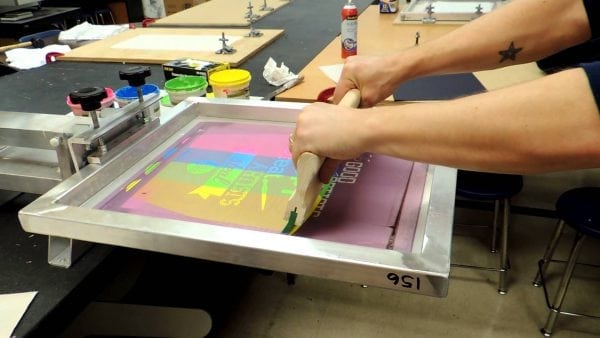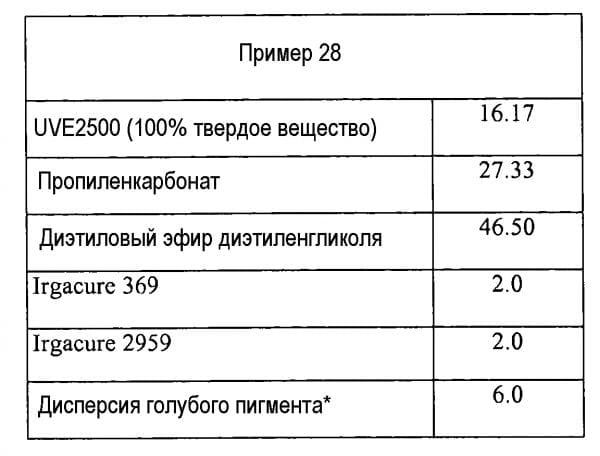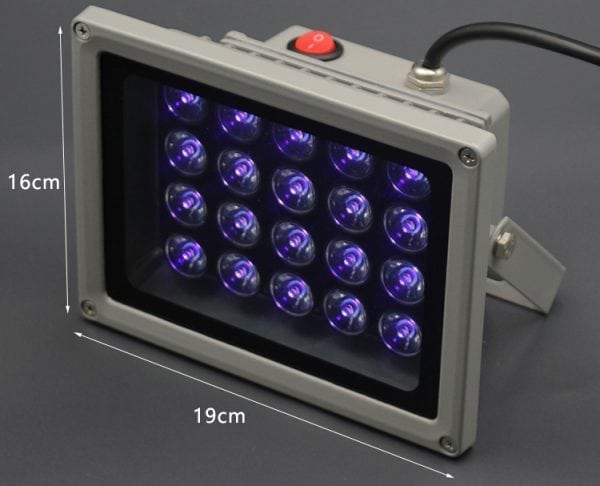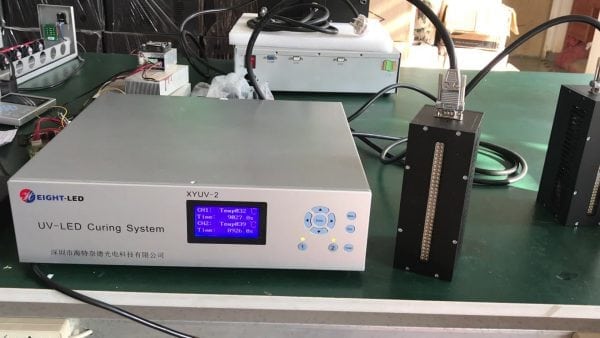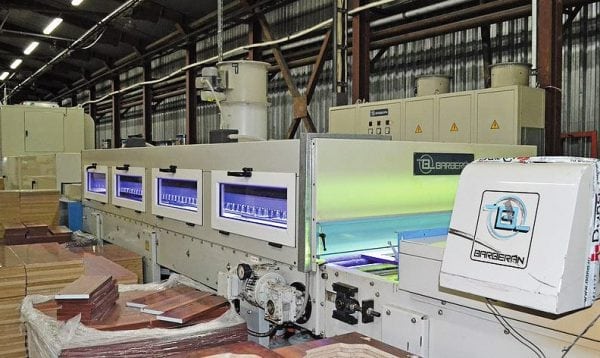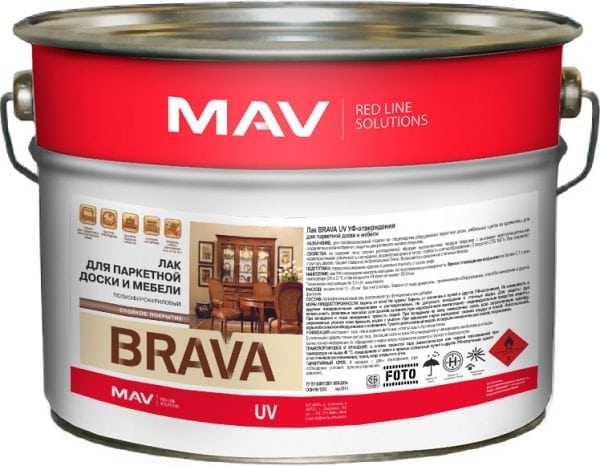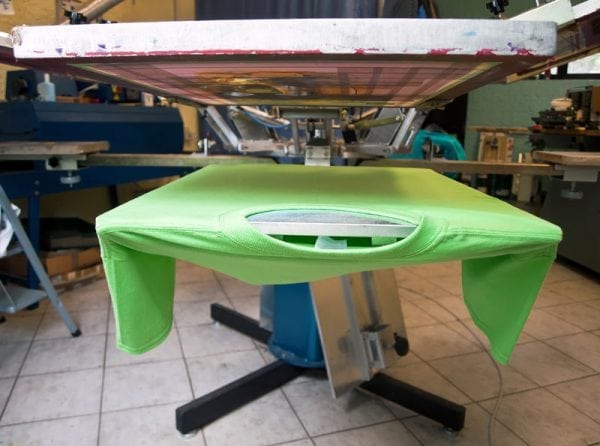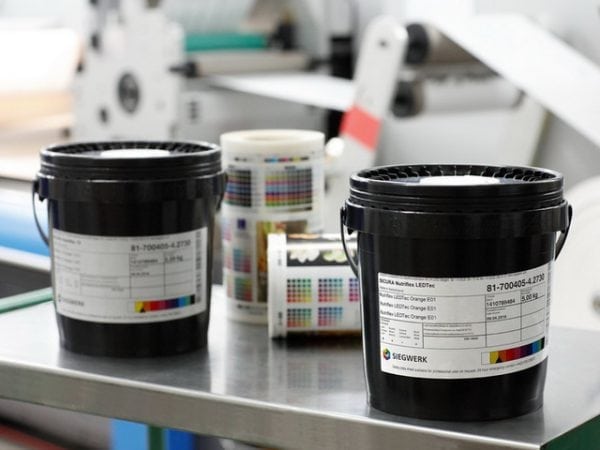UV curing paint contains substances that react to ultraviolet radiation and therefore dry in air. Such colorful material is used for various types of printing, for example, offset, flex, screen, for reproducing raster graphics. It is applied to any surface - paper, plastic, polyethylene, with a thick or thin layer.
- Paint Features
- Curing methods
- UV sources
- Coating quality
- Advantages and disadvantages of UV curing technology
- Specificity of UV Curing Inks
- Acrylic
- Polyester
- Water borne
- UV inks in print
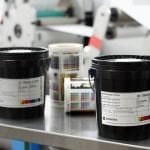
In the printing process, UV lamps are used, which fix the ink applied to the product. Some colorful materials that cure under the influence of ultraviolet rays are toxic and must not be printed on food packaging. But during drying, they do not emit solvents into the air, in contrast to solvent compositions. However, when using lamps, ozone is released, which can be toxic if its concentration in the air is high.
to contents ↑Paint Features
UV curing paint differs from ordinary solvent-based formulations in its ability to dry and “set” almost instantly. Other features of UV dyeing materials:
- rigid structure;
- more viscous, sticky;
- resistant to moisture;
- It doesn’t wear off as quickly as solvent paints;
- hardens (dries) only under the influence of UV radiation.
As part of UV curable ink:
- pigment or dye that gives the primary color to the coating;
- a specialized liquid binder, which turns into a solid film, polymerizes under the influence of UV rays;
- a photoinitiator that participates in a chemical reaction of polymerization or curing of the paint layer;
- UV curing agents are oligomers that are viscous substances that cure under the influence of ultraviolet light;
- monomers - solvents, vegetable oils;
- additives, waxes and fillers.
On a note! The coloring composition is a curable polymer powder that heats, melts, and forms a durable film on paper, plastic, or wood.
An interesting feature of ultraviolet curing paints is that the layer cures faster on white material and slower on dark materials, because a light background repels UV radiation, and black, on the contrary, absorbs.
to contents ↑Curing methods
The final step in obtaining a coat of paint is drying. Dispersed medium in the process of drying powder varnishes and paints - air. The film is obtained because solid polymer particles in the composition of the material form a strong bond, first melt, then cure. The ink composition heats up to 110 degrees and freezes in a matter of seconds.
UV sources
The optimization of the curing process depends on the choice of the UV emitter. UV light sources can be:
- electrodeless, LED, quartz emitters;
- mercury lamps;
- luminescent, xenon lighting devices;
- LED UV drying lamps.
The main rule when choosing a curing paintwork machine is that the radiation frequency of the device must coincide with the absorption frequency of the photoinitiator, which is responsible for the optimal dose of UV rays and the ability of coloring materials to enter into a chemical reaction.
For curing powder paints and varnishes, you can use a wide range of lamps, however, they have significant disadvantages:
- energy consumption;
- toxicity.
to contents ↑Attention! The listed devices, when heated, release a large amount of ozone into the air, which adversely affects health.
Coating quality
Curable polymers in paints and varnishes form a durable film during drying. Layer thickness does not affect the quality of the result. Paint and varnish material:
- lies flat;
- does not spread beyond the borders of the image;
- distributed evenly.
Quality is influenced by:
- a coloring composition, which includes pigment, diluent, resin, photoinitiator, fillers, synergist;
- painted surface;
- conditions in which the painting takes place;
- radiation dose;
- type of UV device;
- the distance between the lamps and the radiation source to the substrate.
to contents ↑The paint coating is durable, resistant to moisture, does not fade under the influence of sunlight, other radiation, so even full-color images applied using UV-curable paints come out with high quality.
Advantages and disadvantages of UV curing technology
UV curing is environmentally friendly. Other advantages of modern technology:
- short drying period of varnish or paint;
- high performance;
- profitability because drying of finished products does not take time;
- use in parts, for example, painting a specific surface area;
- Recycling of paintwork residue or topcoat;
- applying a thin layer is sufficient for the high quality of the finished product;
- strength and durability of the painted surface;
- low explosiveness;
- safety for health.
UV curing technology also has disadvantages:
- use on automatic lines pays off only in case of high production volumes;
- the price of paints and varnishes is higher than similar solvent or folic;
- if you need to paint non-planar surfaces, drying takes longer;
- To achieve high quality, the curing process must be slowed down.
In addition, if layer defects, such as smudges, drops, have formed on the surface to be painted, they are most often unrecoverable.
In the market of paints and varnishes there are several types of coloring compounds that dry out under the influence of ultraviolet radiation.
to contents ↑Specificity of UV Curing Inks
Acrylic, water-borne, polyester varnishes and colorful materials that cure with UV radiation are used in the printing shops.
Acrylic
These paints dry in just a few minutes and are highly reactive, have an almost 100% dry residue. The composition does not contain a UV hardener. The hardness and strength of the resulting layer makes it possible to use the material when painting parquet coatings. They are environmentally friendly, almost do not emit fumes during drying. However, when in contact with open skin, the epidermis is harmed, so you need to work with acrylic coatings with gloves, a respirator and glasses. Due to the high viscosity, acrylic coatings cannot be applied by spraying.
to contents ↑Polyester
These paints and varnishes are inexpensive, but blowing is required for complete drying. Cure when exposed to a large number of ultraviolet lamps. Suitable for spray application. LKM layers tend to turn yellow during UV curing.
to contents ↑Water borne
Characteristics of these paints and varnishes:
- environmental friendliness;
- high quality;
- security.
Water-borne coatings do not turn yellow and are suitable for spraying. When dried, they form durable pigment layers of high quality. Absolutely harmless in contact with open skin. They are more expensive than acrylic and polyester, require convective drying.
Comparison table for acrylic, polyester and waterborne UV curing paints
| Description | Reactivity | Environmental friendliness | Cost | disadvantages |
|---|---|---|---|---|
| Acrylic | High | No fumes. Harmful in contact with skin. | Low | Do not spray |
| Polyester | Low | Eco friendly | Low | Turn yellow when dry For complete hardening, you must go through the stage of blowing and the tunnel |
| Water borne | High | Eco-friendly Harmful in contact with skin | High | Need convection drying |
UV inks in print
UV curing technology is used in almost all printing methods:
- screen printing of all kinds;
- flexo printing;
- silk screen printing;
- offset sheet and roll;
- printing;
- large format inkjet printers.
Due to the unique properties of the dyeing materials, it cures almost instantly, printing with UV inks can be done on different materials:
- paper;
- wood;
- plastics
- film;
- plastic.
If printing is performed on non-absorbent materials, for example, polyethylene films, it is necessary to control the surface tension, because the problem of adhesion of the ink layer to the film or plastic can be a time bomb. Defects will become visible later, and it will be impossible to fix the marriage, so the tension is checked with special inks or test pencils.
The following climatic conditions must be observed during printing:
- temperature from 18 to 24 degrees;
- humidity from 50 to 60%.
Important! The light from the fluorescent lamps and the sun's rays should not fall on the printing press, cans with coloring materials. To protect the windows, you must use yellow filters and lamps with a safe yellow and white spectrum.
Finished products can be varnished with UV curing, which protect the product and create special effects, such as a glossy or matte surface. UV varnishing is considered an environmentally friendly, safe and cost-effective technology.
In general, ultraviolet curable inks and varnishes are popular in the printing shops of Moscow, because even when printed on “capricious” materials they give good results.

